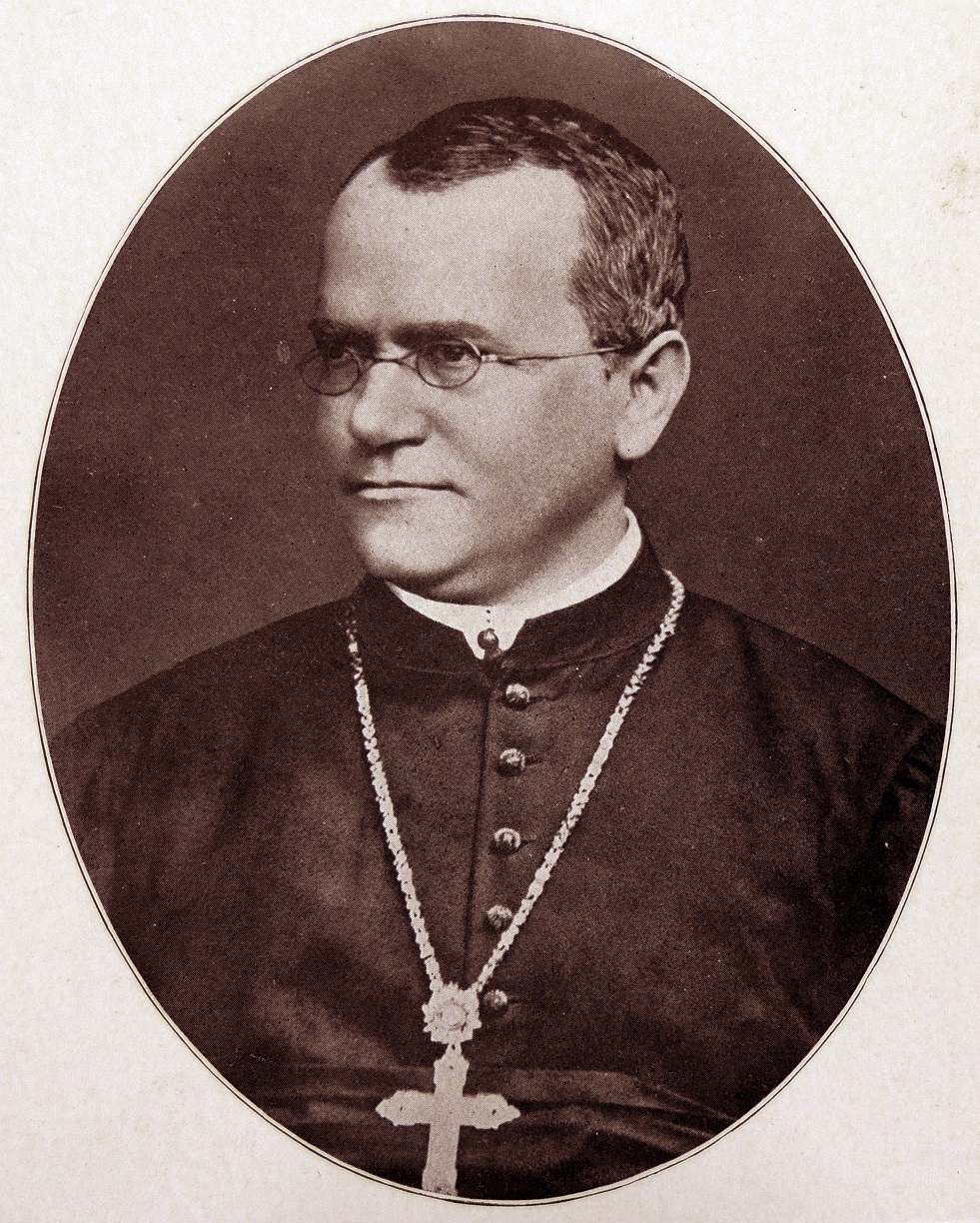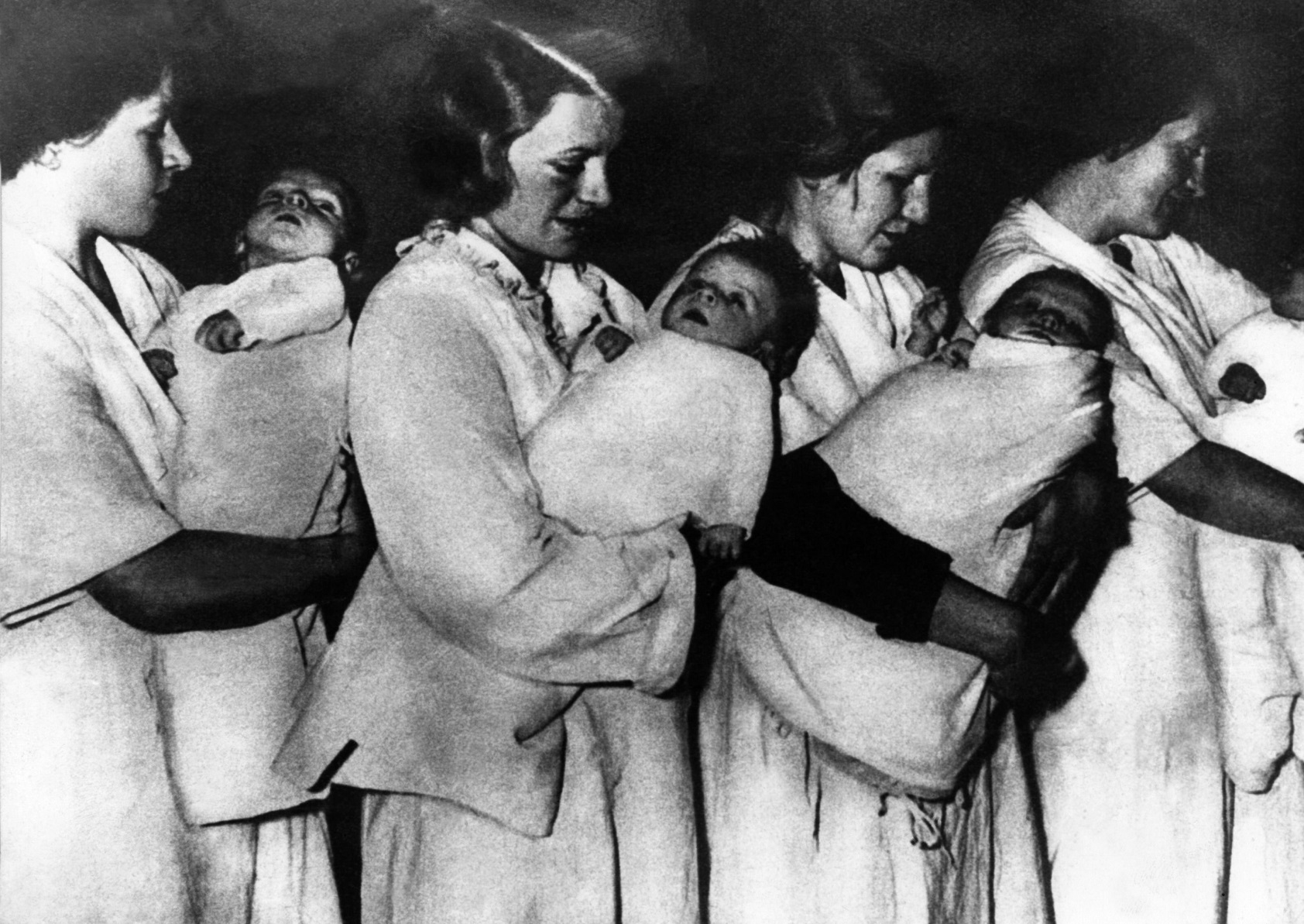
In the middle of the 19th century, Mendel (whose real name was Johann — Gregor was his Augustinian appellation) bred more than 28,000 pea plants, crossing tall with short, wrinkly seeds with smooth, and purple flowers with white. What he found in that forest of pea plants was that these traits segregated in the offspring, and did not blend, but re-emerged in predictable ratios. What Mendel had discovered were the rules of inheritance. Characteristics were inherited in discrete units — what we now call genes — and the way these units flowed through pedigrees followed neat mathematical patterns.
These rules are taught in every secondary school as a core part of how we understand fundamental biology — genes, DNA and evolution. We also teach this history, for it is a good story. Mendel’s work, published in 1866, was being done at the same time as Darwin was carving out his greatest idea. But this genius Moravian friar was ignored until both men were dead, only to be rediscovered at the beginning of the new century, which resolved Darwinian evolution with Mendelian genetics, midwifing the modern era of biology.
But there’s a lesser-known story that shaped the course of the 20th century in a different way. The origins of genetics are inextricably wedded to eugenics. Since Plato suggested the pairing of "high-quality" parents, and Plutarch described Spartan infanticide, the principles of population control have been in place, probably in all cultures. But in the time of Victorian industrialisation, with an ever-expanding working class, and in the wake of Darwinian evolution, Darwin’s half-cousin, Francis Galton, added a scientific and statistical sheen to the deliberate sculpting of society, and he named it eugenics. It was a political ideology that co-opted the very new and immature science of evolution, and came to be one of the defining and most deadly ideas of the 20th century.

American eugenics was faithfully married to Mendel’s laws — though Mendel himself had nothing to do with these policies. Led by Charles Davenport — a biologist and Galton devotee — the Eugenics Record Office in Cold Spring Harbor, New York, set out in 1910 to promote a racist, ableist ideology, and to harvest the pedigrees of Americans. With this data, Davenport figured, they could establish the inheritance of traits both desirable and defective, and thus purify the American people. Thus they could fight the imagined threat of great replacement theory facing white America: undesirable people, with their unruly fecundity, will spread inferior genes, and the ruling classes will be erased.
Pedigrees were a major part of the US eugenics movement, and Davenport had feverishly latched on to Mendelian inheritance to explain all manner of human foibles: alcoholism, criminality, feeblemindedness (and, weirdly, a tendency to seafaring). Heredity, he wrote in 1910, "stands as the one great hope of the human race; its saviour from imbecility, poverty, disease, immorality", and like all of the enthusiastic eugenicists, he attributed the inheritance of these complex traits to genes — nature over nurture. It is from Davenport that we have the first genetic studies of Huntington’s disease, which strictly obeys a Mendelian inheritance, and of eye colour, which, despite what we still teach in schools, does not.
One particular tale from this era stands out. The psychologist Henry Goddard had been studying a girl with the pseudonym Deborah Kallikak in his New Jersey clinic since she was 8. He described her as a "high-grade feeble-minded person, the moron, the delinquent, the kind of girl or woman that fills our reformatories". In order to trace the origin of her troubles, Goddard produced a detailed pedigree of the Kallikaks. He identified as the founder of this bloodline Martin Kallikak, who stopped off en route home from the war of independence to his genteel Quaker wife to impregnate a "feeble-minded but attractive barmaid", with whom he had no further contact.
In Goddard’s influential 1912 book, The Kallikak Family: A Study in the Heredity of Feeble-Mindedness, he traced a perfect pattern of Mendelian inheritance for traits good and bad. The legitimate family was eminently successful, whereas his bastard progeny produced a clan of criminals and disabled "defectives", eventually concluding with Deborah. With this, Goddard concluded that the feeble-mindedness of the Kallikaks was encoded in a gene, a single unit of defective inheritance passed down from generation to generation, just like in Mendel’s peas.

This is a modern understanding of the extreme complexity of the human genome, probably the richest dataset in the known universe. But a meticulous contemporary analysis is not even required in the case of the Kallikaks, because the barmaid never existed.
Martin Kallikak’s legitimate family was indeed packed with celebrated achievers — men of medicine, the law and the clergy. But Goddard had invented the illegitimate branch, by misidentifying an unrelated man called John Wolverton as Kallikak’s bastard son, and dreaming up his barmaid mother. There were people with disabilities among Wolverton’s descendants, but the photos in Goddard’s book show some of the children with facial characteristics that are associated with foetal alcohol syndrome, a condition that is entirely determined not by genetic inheritance, but by exposure to high levels of alcohol in utero. Despite the family tree being completely false, this case study remained in psychology textbooks until the 1950s as a model of human inheritance, and a justification for enforced sterilisation. The Kallikaks had become the founding myth of American eugenics.
The German eugenics movement had also begun at the beginning of the 20th century, and grown steadily through the years of the Weimar Republic. By the time of the rise of the Third Reich, principles such as Lebensunwertes Leben — life unworthy of life — were a core part of the national eugenics ideology for purifying the Nordic stock of German people. One of the first pieces of legislation to be passed after Hitler seized power in 1933 was the Law for the Prevention of Genetically Diseased Offspring, which required sterilisation of people with schizophrenia, deafness, blindness, epilepsy, Huntington’s disease, and other conditions that were deemed clearly genetic. As with the American’s tenacious but fallacious grip on heredity, most of these conditions are not straightforwardly Mendelian, and in one case where it is — Huntington’s — the disease takes effect after reproductive age. Sterilisation had no effect on its inheritance.
The development of the Nazis’ eugenics programmes was supported intellectually and financially by the American eugenicists, erroneously obsessed as they were with finding single Mendelian genes for complex traits, and plotting them on pedigrees. In 1935, a short propaganda film called Das Erbe (The Inheritance) was released in Germany. In it, a young scientist observes a couple of stag beetles rutting. Confused, she consults her professor, who sits her down to explain the Darwinian struggles for life — and shows her a film of a cat hunting a bird, cocks sparring. Suddenly she gets it, and exclaims, to roars of laughter: "Animals pursue their own racial policies!".

The film then shows a pedigree of a hunting dog, just the type that you might get from the Kennel Club today. And then, up comes an animation of the family tree of the Kallikaks, on one side Erbgesunde Frau and on the other, Erbkranke Frau — genetically healthy and hereditarily defective women. On the diseased side, the positions of all of the miscreants and deviants pulse to show the flow of undesirable people through the generations, as the voiceover explains. Das Erbe was a film to promote public acceptance of the Nazi eugenics laws, and what follows the entirely fictional Kallikak family tree is its asserted legacy: shock images of seriously disabled people in sanitoriums, followed by healthy marching Nazis, and a message from Hitler: "He who is physically and mentally not healthy and worthy, may not perpetuate his suffering in the body of his child." Approximately 400,000 people were sterilised under this policy. A scientific lie had become a pillar of genocide in just 20 years.
Science has and will always be politicised. People turn to the authority of science to justify their ideologies. Today, we see the same pattern, but with new genetics. After the school shootings in Buffalo in May, there was heated discussion in genetics communities, as the murderer had cited specific academic work in his deranged manifesto, legitimate papers on the genetics of intelligence and the genetic basis of Jewish ancestry, coupled with the persistent pseudoscience of the great replacement.
Science strives to be apolitical, to rise above the grubby worlds of politics and the psychological biases that we are encumbered with. But all new scientific discoveries exist within the culture into which they are born, and are always susceptible to abuse. This does not mean we should shrug and accept that our scientific endeavours are imperfect and can be bastardised with nefarious purpose, nor does it mean we should censor academic research.
But we should know our own history. We teach a version of genetics that is easily simplified to the point of being wrong. The "laws" in biology have a somewhat tricksy tendency to be beset by qualifications, complexities and caveats. Biology is inherently messy, and evolution preserves what works, not what is simple. In the simplicity of Mendel’s peas is a science which is easily co-opted, and marshalled into a racist, fascist ideology, as it was in the US, in Nazi Germany and in dozens of other countries. To know our history is to inoculate ourselves against it being repeated. — Guardian News and Media
Control: The Dark History and Troubling Present of Eugenics by Adam Rutherford is published by Weidenfeld & Nicolson.












